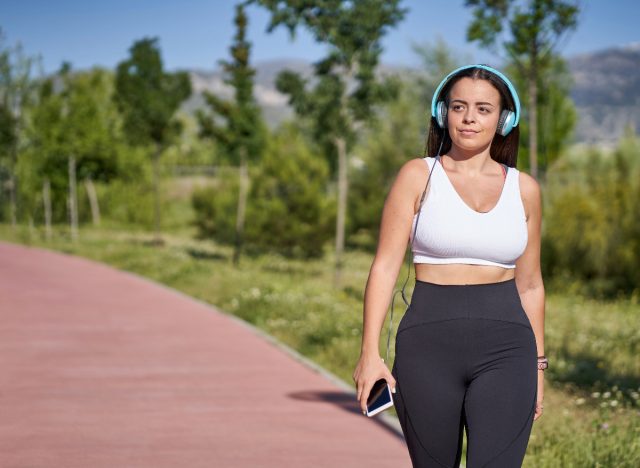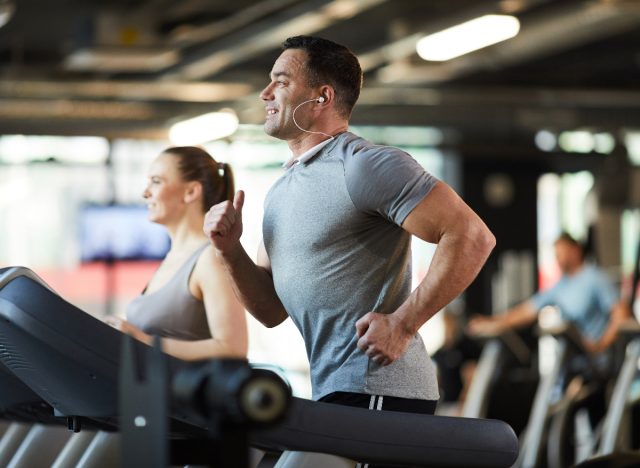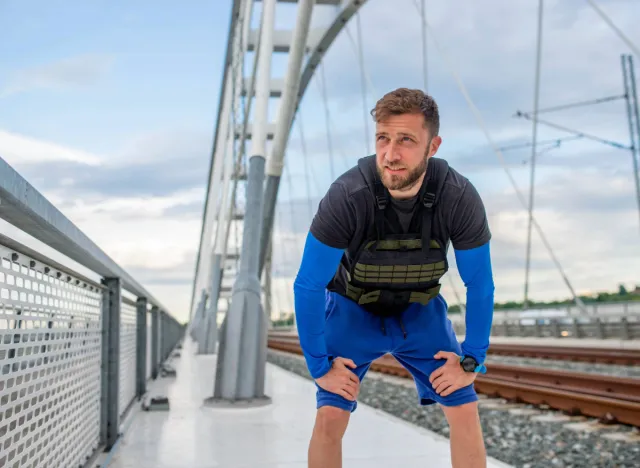Here's How Long Your Walking Workout Should Be To Shrink Belly Fat

If you're on a mission to shed belly fat, walking is one of the simplest yet most effective exercises you can add to your game plan. It's low-impact, accessible to all fitness levels, and doesn't require fancy equipment; easy enough, right? Plus, research shows that regular walking can help reduce visceral fat, aka that stubborn fat stored around your abdomen.
But how long should your walking workouts be to see noticeable results? The answer depends on intensity, consistency, and overall lifestyle habits. Whether taking a stroll or power-walking with purpose, the key is finding the right duration and approach to maximize fat loss. Let's look at how you can make the most of your steps to slim down your midsection.
How Long Should Your Walking Workout Be to Burn Belly Fat?

Consistency is key in burning fat, but so is duration. A good rule of thumb is to aim for 30 to 60 minutes of walking daily, five to six days a week. This meets the recommended criteria, which suggests that 150 to 300 minutes of moderate cardio per week is effective for fat loss. For beginners, start with shorter walks—20 to 30 minutes—and gradually increase your time and intensity as your endurance improves.
Why this time frame? Walking for at least 30 minutes taps into your body's fat stores, mainly if you maintain a steady pace that gets your heart rate into the fat-burning zone (around 65-80% of your maximum heart rate). Longer walks at a brisk pace increase calorie burn, making creating the deficit needed for fat loss easier.
Ultimately, the best walking workout is the one you can stick with consistently. Whether you opt for shorter, high-intensity walks or longer, steady-paced sessions, the key is to keep moving and challenge yourself over time.
The Best Walking Workouts to Shrink Belly Fat

Not all walks are created equal. Adding variety to your walking routine keeps it engaging and helps you burn more calories. Here are some walking workouts to try:
- Brisk Walking Intervals: Alternate between 2 minutes of fast walking and 1 minute of a slower recovery pace. Repeat for 20 to 30 minutes. These intervals are fantastic for busy schedules.
- Incline Walking: Find a hilly route or use a treadmill incline to engage more muscles, including your glutes and core.
- Weighted Vest Walking: Wearing a weighted vest adds resistance, boosts calorie burn, and activates more muscles.
- Long Steady Walks: Dedicate one day a week to a slower, steady-paced walk lasting 60 minutes or more. This helps build endurance and keeps your fat-burning momentum going.
Factors That Influence Belly Fat Loss During Walking Workouts

While walking is a fantastic tool for fat loss, the rate at which you lose belly fat depends on several factors:
- Consistency: Regular walking over weeks and months is essential to seeing significant changes.
- Intensity: A faster pace or incline burns more calories and accelerates fat loss.
- Diet: Exercise alone is insufficient. Combining your walking routine with a nutritious, calorie-controlled diet will achieve the best results.
- Sleep & Stress Levels: Poor sleep and chronic stress can lead to higher cortisol levels linked to stubborn belly fat.
- Fitness Level: If you're new to exercise, you may see faster initial progress, while those who are more conditioned might need to increase intensity or duration to continue seeing results.
Tips to Maximize Your Treadmill Time for Fat Loss

Want to get the most out of your walking workouts? Follow these simple tips:
- Be Consistent: The best workout is the one you do regularly. Schedule your walks like appointments and stick to them.
- Warm-up and Cool-down: Start with a five-minute warm-up to prepare your body, and cool down at the end to reduce soreness and improve recovery.
- Mix It Up: Add intervals, incline, or resistance to challenge your body and avoid plateaus.
- Track Your Progress: Use a fitness tracker or app to monitor steps, distance, and heart rate. Seeing your progress is motivating!
- Dial in Your Diet: No workout can outpace a poor diet. To support your fat-loss goals, focus on whole foods, lean protein, and plenty of vegetables.
References
- La New, Jacquelyn M, and Katarina T Borer. "Effects of Walking Speed on Total and Regional Body Fat in Healthy Postmenopausal Women." Nutrients vol. 14,3 627. 31 Jan. 2022, doi:10.3390/nu14030627
- Yang, Yun Jun. "An Overview of Current Physical Activity Recommendations in Primary Care." Korean journal of family medicine vol. 40,3 (2019): 135-142. doi:10.4082/kjfm.19.0038
- Carey, Daniel G. "Quantifying differences in the "fat burning" zone and the aerobic zone: implications for training." Journal of strength and conditioning research vol. 23,7 (2009): 2090-5. doi:10.1519/JSC.0b013e3181bac5c5









